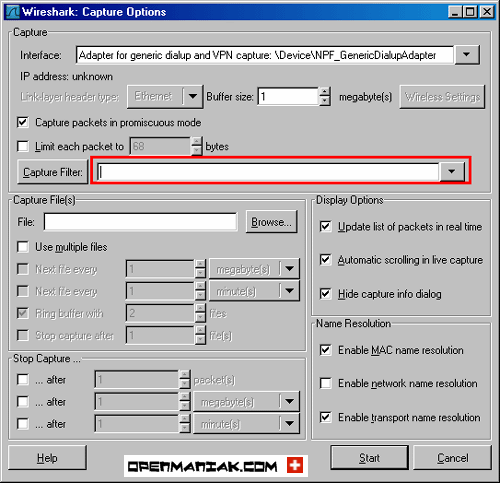

At the Wireshark popup window, next to the IP address, there is a drop-down menu to select the interfaces. Select the interface from which you need to capture the packets. For example, enter 2002 if you used the default, or enter the port number if you used a port other than the default.

In the Port field, enter the port number of the WAP device. In the Host field, enter the IP address of the WAP device.

Very powerful tools indeed.On your computer, initiate the Wireshark tool. As a result, to ensure that DNS packets appear when searching for domain names, the filter frame contains “google” should be used instead of frame contains “”. Note that DNS records use various separators in place of literal dots “.”. For example, if I wanted to find my dns query for dns and frame contains "cloudshark" Last but not least, you can of course always use the concatenation operators. You can even get more specific, using the “contains” filter to look at specific parts of a frame, such as tcp contains or eth contains. For example, if I only want to view the DNS query with transaction ID Oxb413: The frame contains feature can also be used for Hex values. Take a look at this capture with the above filter applied: …will show you only those packets that contain the word “cloudshark” somewhere in them.ĬloudShark lets you embed these filters right in the URL that you share. The “frame contains” filter will let you pick out only those packets that contain a sequence of any ASCII or Hex value that you specify. You may know the common ones, such as searching on ip address or tcp port, or even protocol but did you know you can search for any ASCII or Hex values in any field throughout the capture? The great thing about CloudShark’s capture decode is that it supports all of the standard Wireshark display filters.


 0 kommentar(er)
0 kommentar(er)
